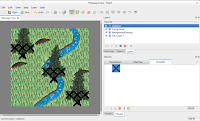The Greenbox System
(new) game developers (see links below) and a good Quest system probably requires a lot of thought even from experienced game developers. Obviously, the quest system you choose strongly depends on the type of game you want to implement.
I will not talk about using an existing quest system that ships with an engine or hard-coding individual quests in this blog post. Instead, I like to describe my self-made approach towards a quest system which reads the data for each quest from an external resource. I will give code examples which hopefully can inspire other game developers facing similar issues.



